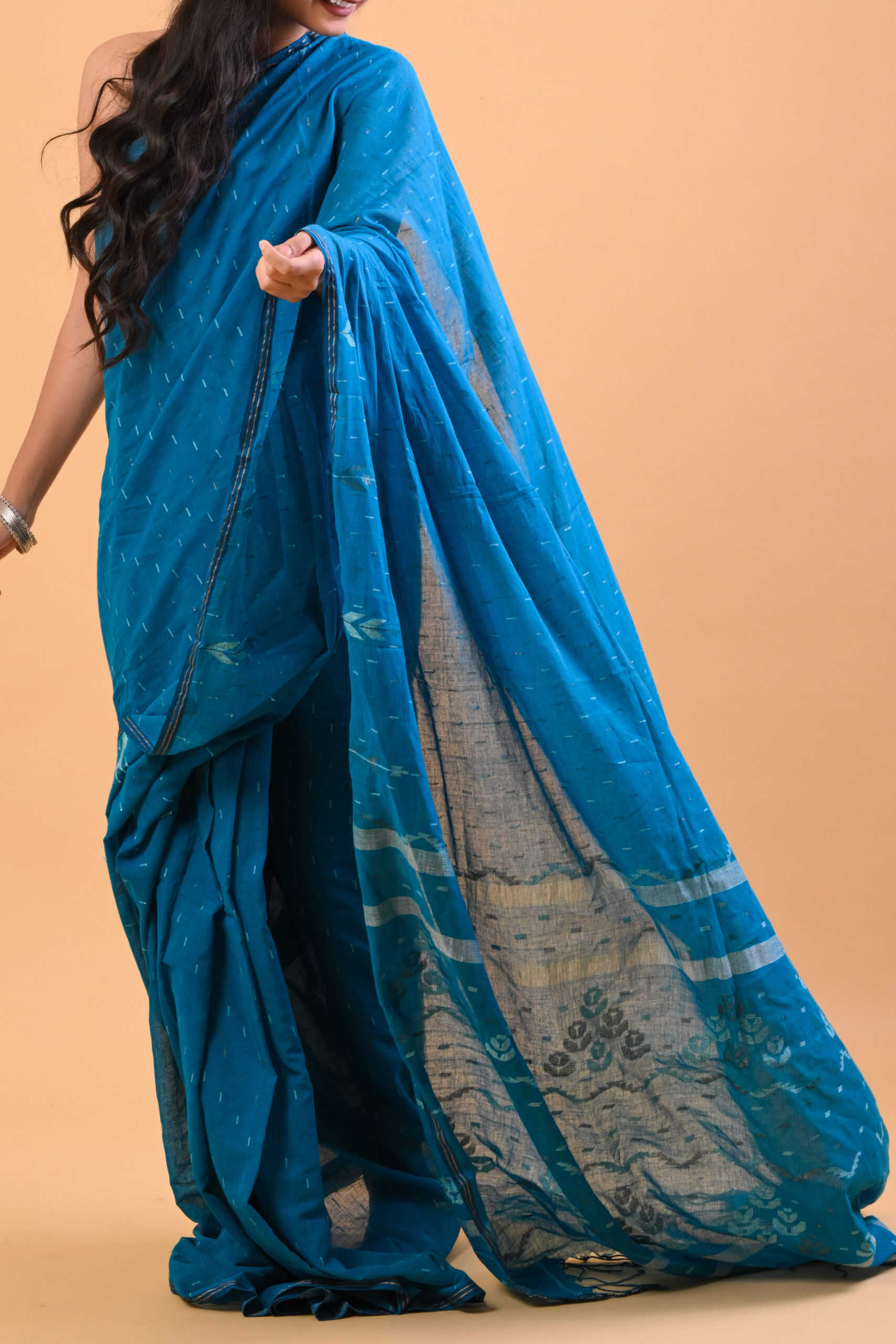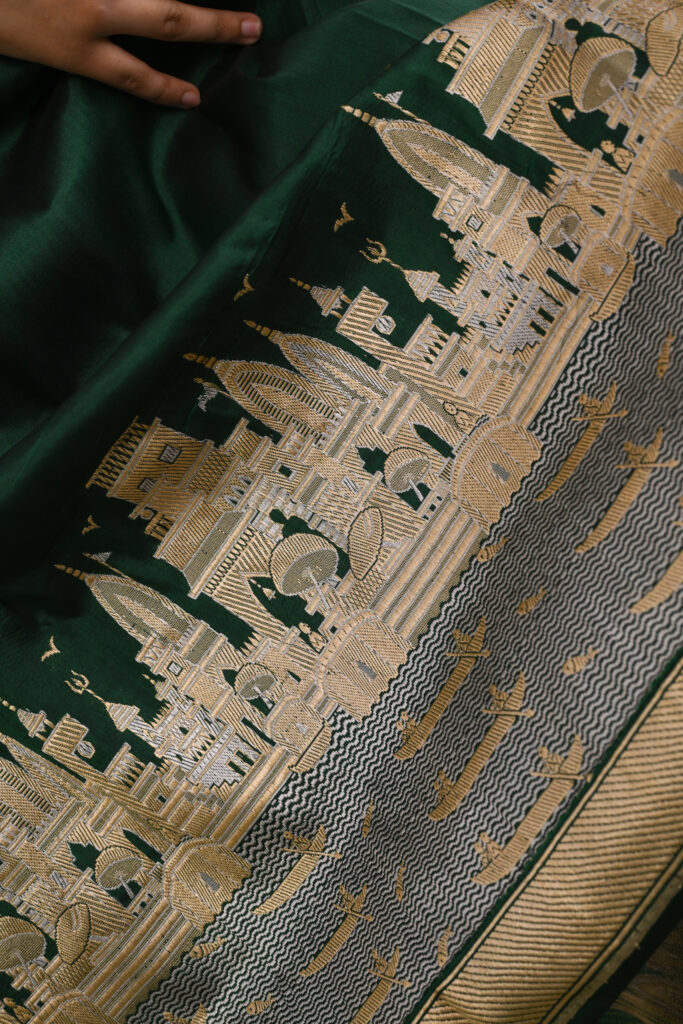Zari work is one of the most recognizable forms of embellishment found in Indian sarees. Originating from Persia, this ancient art form involves weaving metallic threads, often made of silver or gold, into fabric to create intricate designs. Zari has been an integral part of Indian textiles for centuries and continues to be a symbol of luxury and opulence in modern sarees. Whether used as borders, inlays, or all-over motifs, zari elevates the elegance of a saree, making it suitable for special occasions like weddings and festivals.
Zari weaving is a highly specialized craft that requires precision and skill. The metallic threads are combined with silk, cotton, or linen to create shimmering, decorative patterns. Zari sarees are most commonly associated with Banarasi and Kanjivaram sarees, but they can be found in handloom sarees from all over India. The intricate patterns range from geometric designs to floral and animal motifs, often inspired by the cultural and natural heritage of the region.
In contemporary fashion, zari work has found a renewed sense of popularity, with designers experimenting with this age-old technique to create modern sarees that still retain their traditional charm. Zari continues to be the hallmark of luxury, turning any saree into a work of art. By choosing a zari-embellished saree, you embrace not only a glamorous look but also a piece of craftsmanship rooted in centuries of history.


